
Trapped at home last year by COVID lockdowns, and bored senseless, I bought a pack of tarot cards online.
Conventional playing-cards bore the hell out of me, but I’ve long found tarot cards fascinating: each card with its own unique illustration, pregnant with meaning. Of all the fortune-telling implements – astrological charts and crystal balls, oracle bones and fortune sticks – tarot cards are the most visually interesting, and have featured in lots of stories and movies.
In Angela Carter’s short story, “The Lady of the House of Love,” the titular lady, a reluctant vampiress, a direct descendent of Count Dracula, sits in her dilapidated castle, shuffling and reshuffling her deck of tarot cards, casting and recasting a fate she yearns to escape. The godawful film Live and Let Die features a beautiful tarot card reader with psychic abilities, who James Bond seduces by stacking a deck with The Lovers cards, so that, when she picks a card, she thinks they’re destined for each other. In the film The Red Violin, a tarot card reading in Cremona in 1681 becomes the basis of a plot that follows the owners of a precious violin across time and space, from 18th-century Vienna, to 19th-century Oxford, to Cultural Revolution-Shanghai, to 1997-Montreal. A part from that movie that always stayed with me was when one of the cards in the spread turns out to be Death, prompting one of the characters to gasp and cry out in dismay, “Oh mio dio!” (“Oh my God!”), as the card is flipped over to reveal the Grim Reaper: a sinister skeleton wielding a scythe.
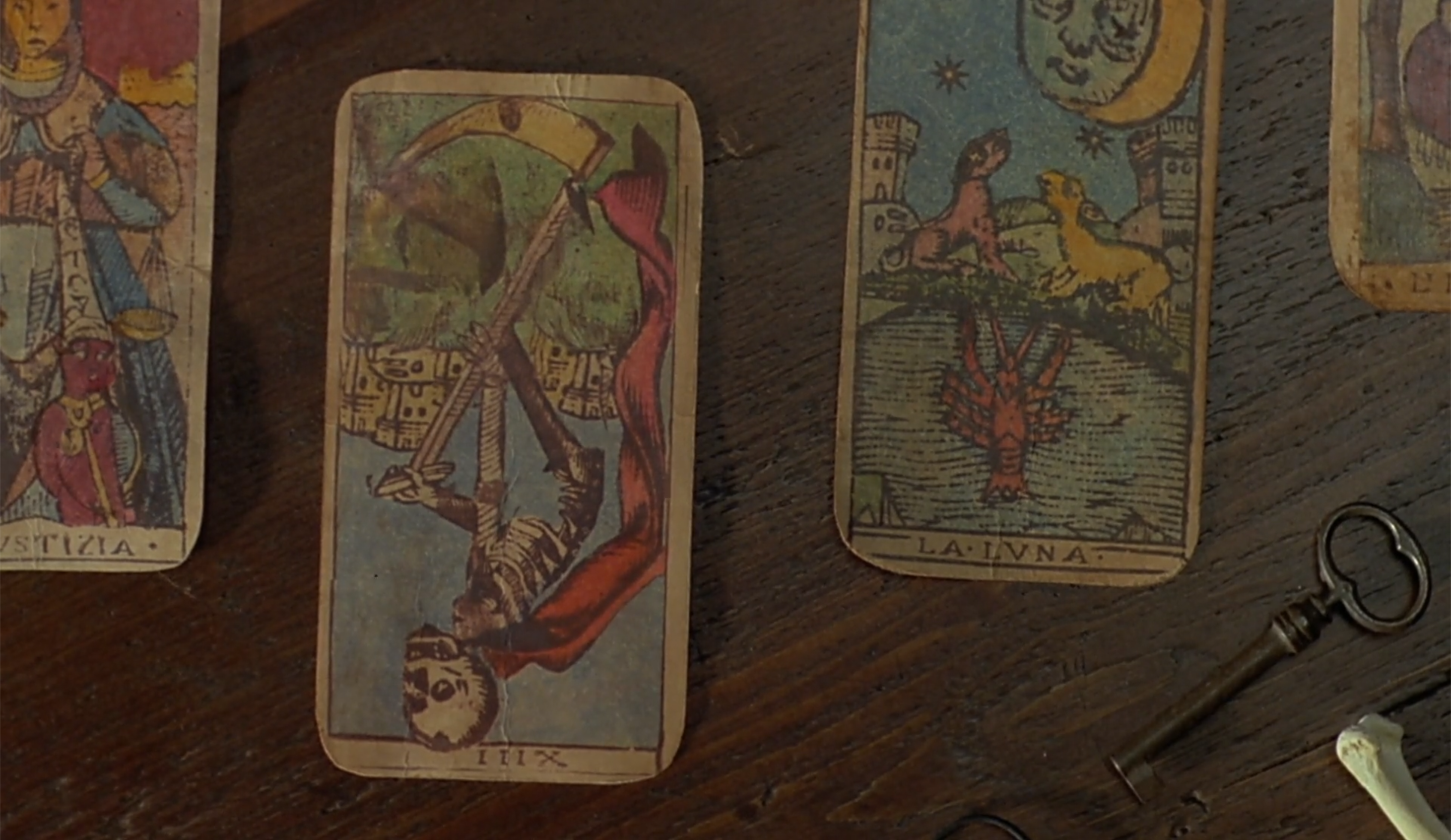
The Death card often scares people, but, as every tarot card reader will tell you, it seldom means literal death, and usually relates to the end of something old and the beginning of something new
I don’t believe that tarot cards have magical powers; in fact, I don’t believe in anything supernatural. But if those two movies are any guide, these cards should be useful for a) seducing people, and b) freaking people out, both of which I enjoy doing (sometimes simultaneously).
But before going into that, let’s delve into the origins of these cards – where did they come from, and why do some people think they have occult powers?
The standard tarot deck consists of 78 cards, divided into two types: 22 major arcana cards (e.g. The Lovers, Death, Wheel of Fortune, Justice), and 56 minor arcana cards (e.g. Ace of Cups, Seven of Pentacles, Ten of Swords, King of Wands). They are thought to have been created in 15th-century Italy as a variation on conventional playing-cards, with the tarot suits (cups, pentacles, swords, and wands) corresponding to the familiar ones (hearts, diamonds, spades, and clubs), and the major arcana cards as trump cards. In her book, A Cultural History of Tarot: From Entertainment to Esotericism, Helen Farley, Lecturer in Studies in Religion and Esotericism at the University of Queensland, wrote that the original tarot deck was probably created either by or for the reclusive Duke Filippo Maria Visconti of Milan, with the trump cards reflecting typical concerns of the Italian Renaissance: “the proximity of death, the fickle hand of fortune, the desirability of living a life of virtue.” This deck, and successive decks made for Visconti and his family members, became the archetype for the tarot decks we see today.
Video on the origins of the Visconti-Sforza tarot deck, by the Morgan Library & Museum, New York
Though they’re now associated with the occult, tarot cards were originally just playing-cards, and people at the time did not think of them as having magic powers. (Incidentally, in that respect, The Red Violin is historically inaccurate, since people in 15th-century Cremona would not have used tarot cards for divination.) The truth is far more prosaic. Indeed, the history of tarot cards is rather depressing: it’s the history of a string of frauds, each basically making up stories to transform a deck of playing-cards into a fortune-telling device and imbuing it with an occult significance it was never intended to have. Tarot cards only began to be associated with the occult in France in the 18th century (some 300 years after they were created). In Paris at the time, tarot cards were unusual, exotic, and, because of the peculiar trump cards, must have appeared mysterious. Antoine Court de Gebelin, a Freemason, concocted the idea that these cards were not mere playing-cards, but the encoded version of the lost Book of Thoth, a legendary Egyptian book, and could be used for divination. Due in part to the spirit of Romanticism of the age, as well as the French obsession with all things Egyptian following Napoleon’s conquest of Egypt, this idea caught on. (This is why tarot card reading is often associated with gypsies, who were mistakenly thought to have come from Egypt.) Then there was the occultist known as Etteilla, who claimed tarot cards were invented by a panel of 17 magicians who served the deity Hermes Trismegistus. What followed was a long series of occultists, in France, in England, and in the United States, who contributed to the mysticism around tarot. It’s hard to tell how many of these charlatans did so out of cynicism, for influence or profit (for example, to sell occult books or tarot decks), and how many had deluded themselves into thinking they’d truly discovered the magical secrets of these cards.
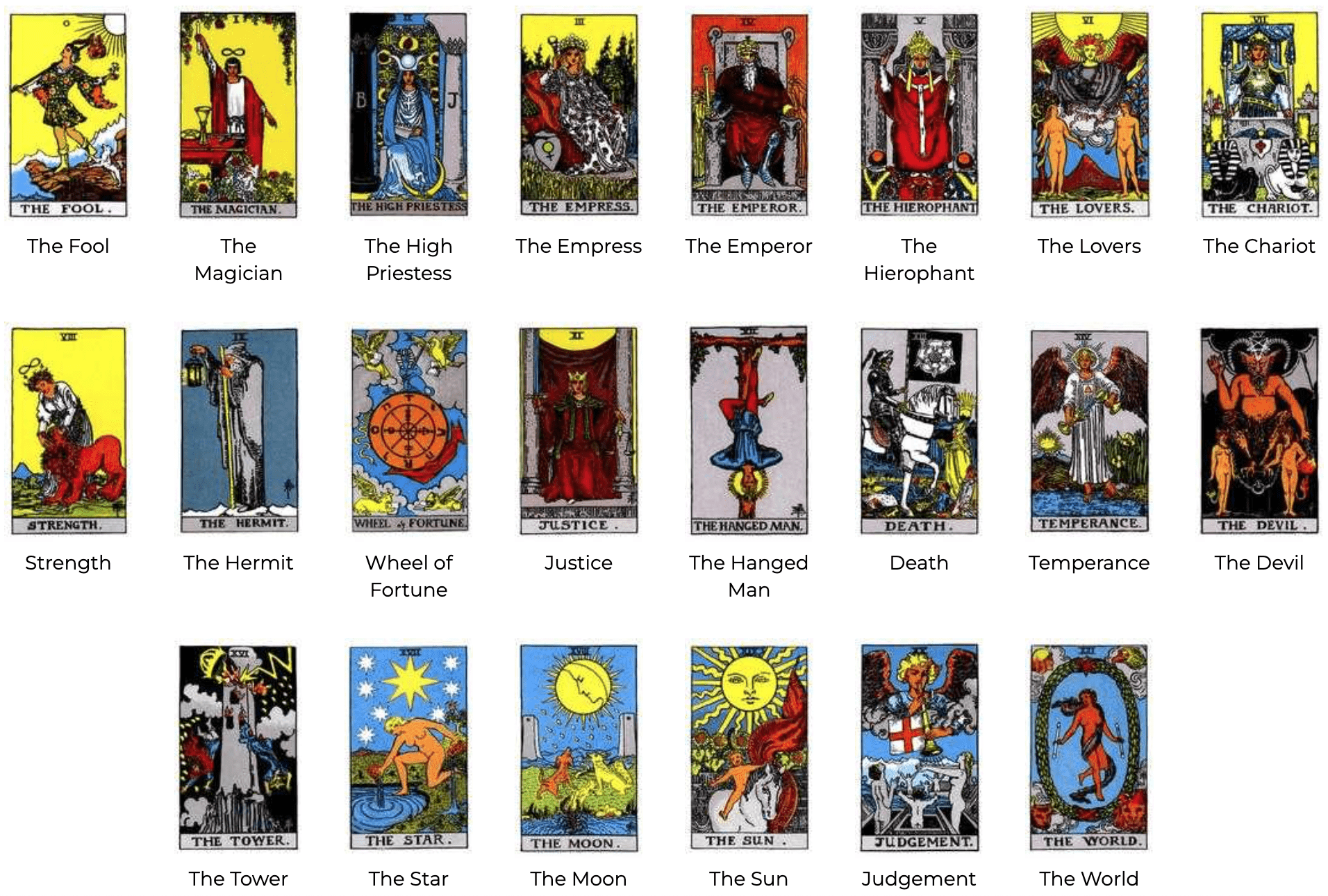
Major arcana cards of the Rider-Waite tarot deck
Whatever the case, it was the American-born occultist Arthur Edward Waite who did the most to commercialize tarot cards. He hired the artist Pamela Colman Smith to make unique illustrations for all 78 cards in the tarot deck, including, unusually, all the minor arcana cards (which previously were just like their counterparts in conventional playing-card decks), and ascribed each card a different meaning when upright or upside down (which he drew from the beliefs of the Hermetic Order of the Golden Dawn, a cult he belonged to). Published by the Rider Company, the Rider-Waite tarot, as it came to be known, is still by far the most popular type of tarot deck.
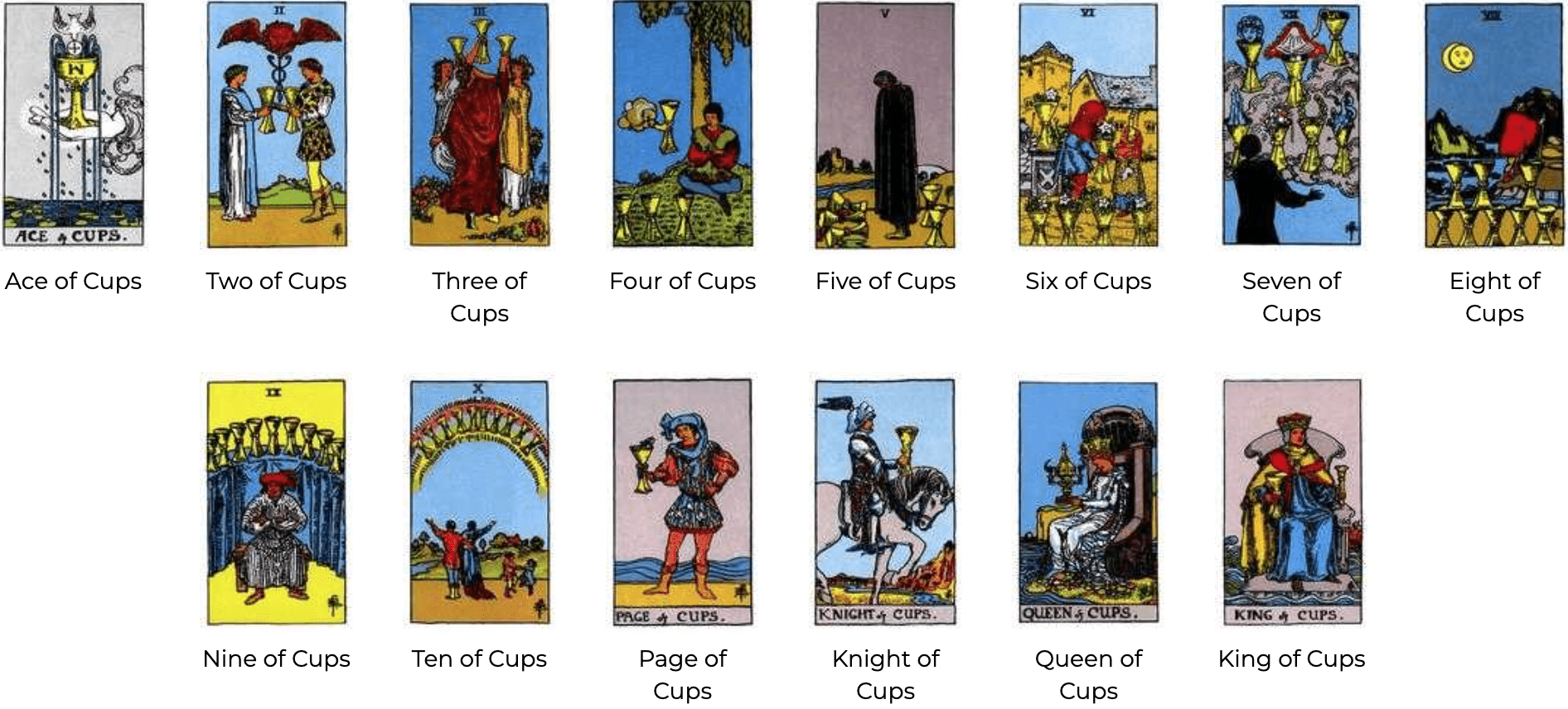
Minor arcana cards of the Rider-Waite tarot deck. Specifically, those of the suit of cups.
Today, increasing commercialization has given us countless brands of tarot card decks. There’s the Modern Witch Tarot, which has images of badass-looking ladies on the cards, for today’s empowered woman. There’s Cat Tarot, which has images of felines, for cat lovers. There’s the Rainbow Moon Tarot, which has images of people of ambiguous gender, for LGBTQ folx. But all of them are based on the beliefs of those occultists, and the premise that these cards actually have divinatory powers.
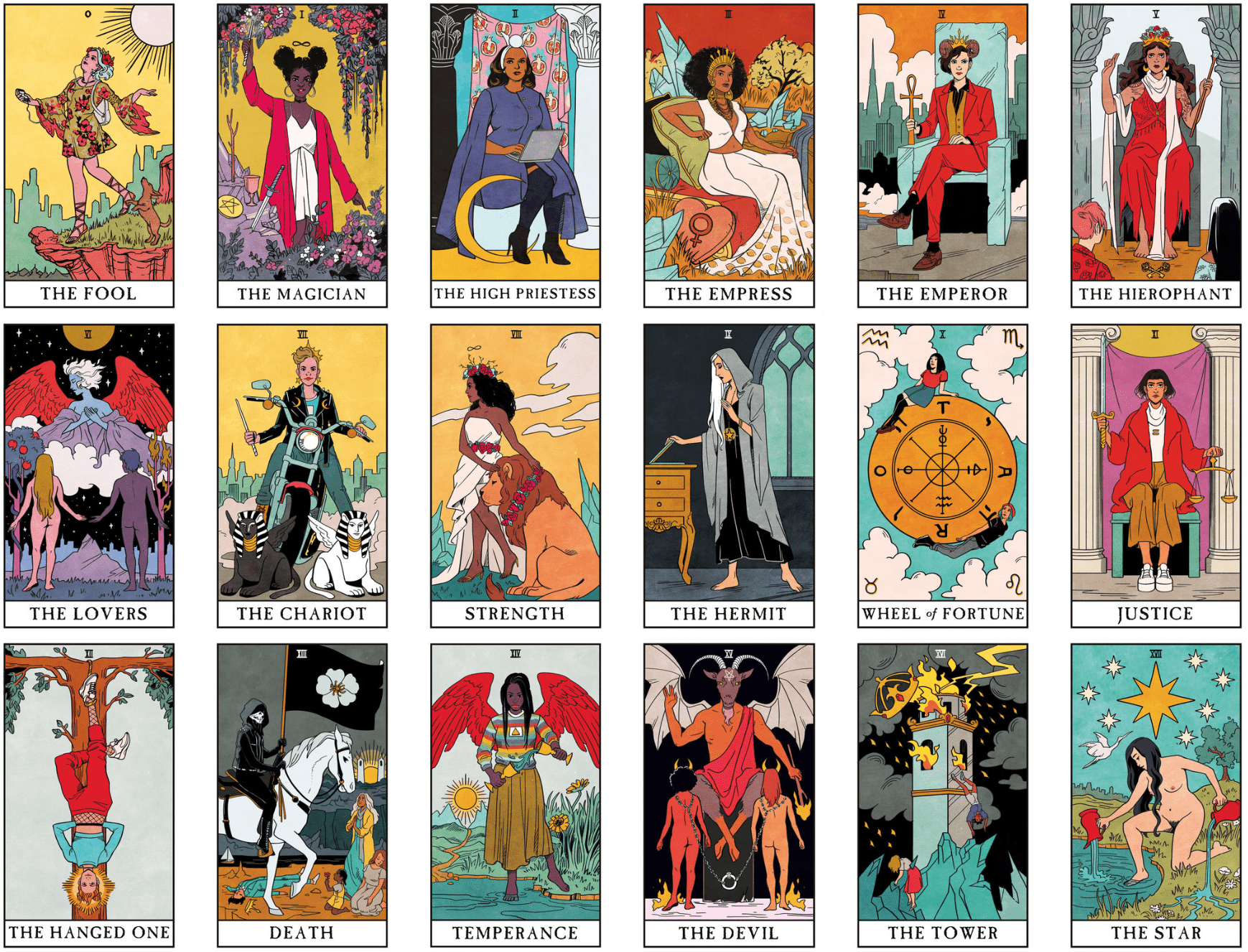
Major arcana cards of the Modern Witch Tarot deck. “With its diversity and all-female celebration of womanhood,” says the caption on the artist’s promotional website, “this vibrant, fashion-forward, and colorful deck brings fun and fresh air to the tarot!”
So which deck did I choose?
I chose the Ethereal Visions Illuminated Tarot Deck, illustrated by Matt Hughes. It has 80 cards rather than the traditional 78 (it has two extra major arcana cards: The Well and The Artist), which traditionalists might view as not legit, but whatever, it’s the most beautiful deck I could find online that also has that classical look, each card lovingly illustrated in an Art Nouveau style and illuminated with gold foil stamping.
There are many different ways to read tarot cards, and different numbers of cards you can lay out for a reading. You usually ask a question and divine the answer from the meanings of the cards. Common formations of cards, called “spreads,” include the one-card spread, whereby a single card is used, and the three-card and five-card spread, whereby multiple cards are used in conjunction with each other. There’s even a 10-card spread called the Celtic Cross, where cards are arranged in the shape of a cross, but that seems ridiculously complicated. I favor the three-card spread since this allows for multiple cards to be interpreted together (which is more fun), without becoming unwieldy; really, a three-card spread is good enough for anyone, those who use more are just showing-off.
Instructional video from The Gem Goddess, a popular tarot card reader
After watching a few “How to read tarot cards” videos on YouTube and reading the fortunes of friends and family members as a party trick, I am proud to say that I am now a master of the mystic arts.
What have I learned about tarot card reading in the process? First, a lot of it is storytelling. You get three or five or 10 different cards with different meanings and you find a way to reconcile them with each other and weave them into a coherent narrative or lesson. This actually makes tarot card reading quite good practice for fiction writers (though not for journalists, who, you know, aren’t actually supposed to make stuff up).
To take things even further, I think a good tarot card reader also has to be really good at bullshitting. I once did a one-card reading for myself, asking the question: “How can I run this magazine better?” I got Page of Cups, inverted, which, according to the little booklet that came with the tarot pack, means immaturity, insecurity, apathy, and impulsiveness.
What the fuck? So, in order to run the magazine better, I should be more immature, insecure, apathetic, and impulsive? I mean, maybe you could make the case that I’m too intense and I need to relax a little and be more childlike, blasé, and spontaneous, but that seems at odds with being more insecure, and it’s hard to see how insecurity would be helpful.
And, no, you can’t flip it around and say that the card is telling me to be less immature, insecure, apathetic and impulsive, because, if so, the card would have been the right way up, which would have meant (sort of) the opposite: Confidence, happiness, contentment, insight.
See? So what would a tarot card reader tell her client in a situation like this? She’d have to make something up. Like, maybe this means there are people in the client’s organization who are immature, insecure, and impulsive, and they should be fired or brought to heel or something?
Anyway: Show, don’t tell – isn’t that the fundamental rule of good writing? Would you like a quick demonstration of my powers?
Alright then, please step into my office.
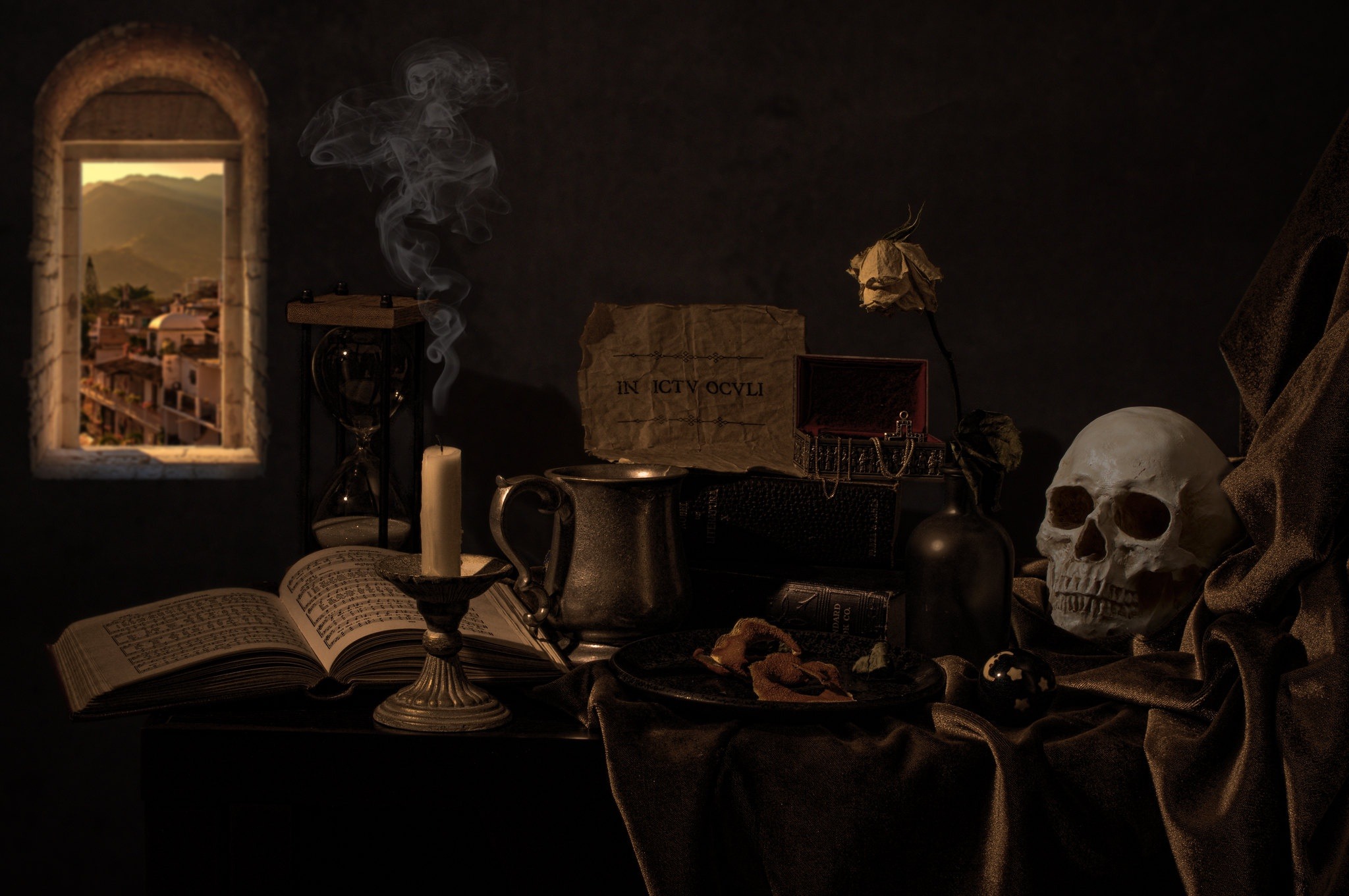
Welcome, Seeker. It is I, Shaun Tan, master of the mystic arts and finder of hidden things. I see all things under the heavens – things that were, things that are, and *dramatic flourish* some things that are yet to be. Why is there a skull on the table? That’s just the last person I did a reading for, don’t worry about it.
Since you’re a reader of Rabbit Hole, I sense that you seek insight not into some trifling personal issue, but into something of global significance, say…the nature of Sino-American relations?
Alright then, I’ll do a simple past, present, and future reading on this. (Boy, I’m really putting my international relations degree to good use.) Pick three cards whilst keeping the issue in mind and lay them on the table one-by-one.
First card: Past
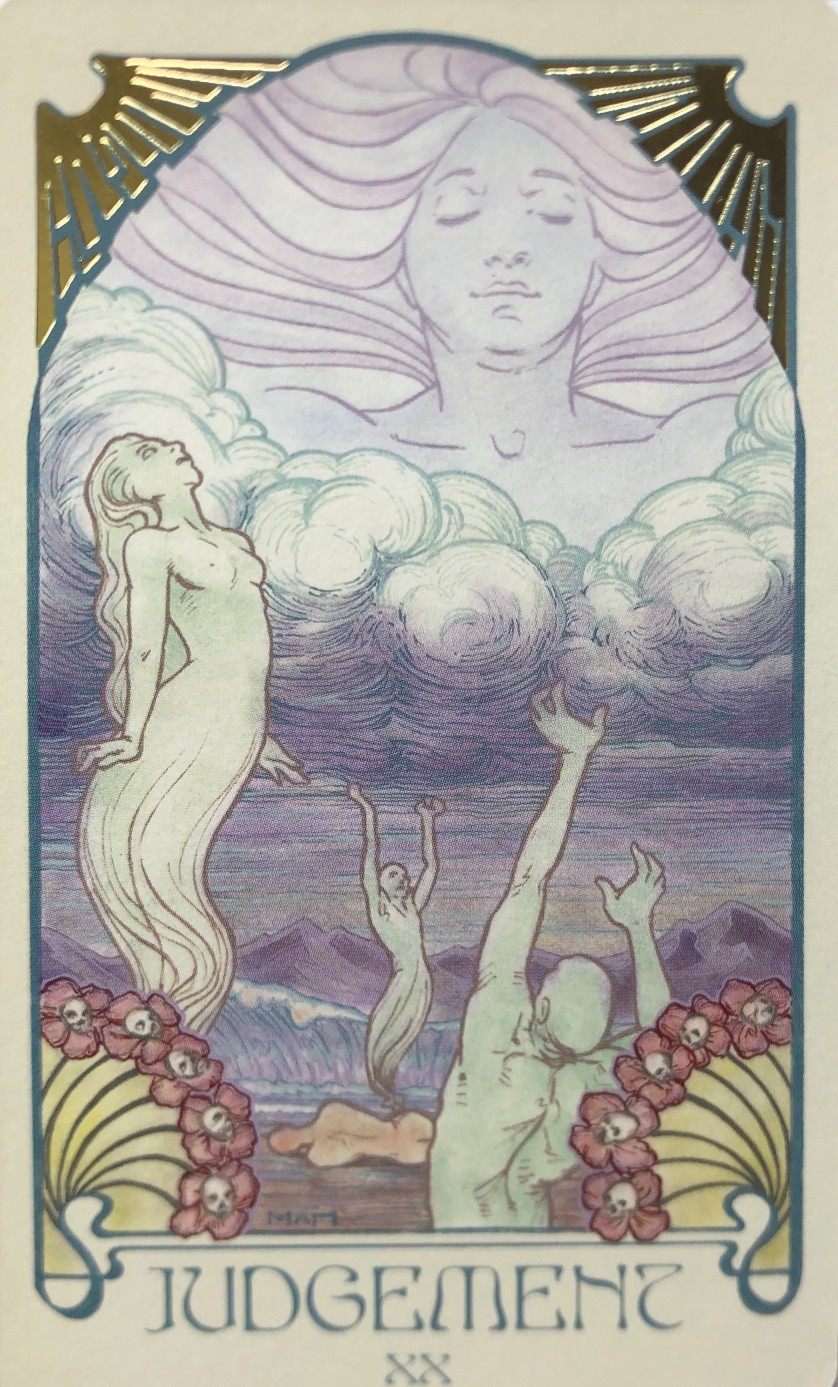
The first card tells us about the past of the US-China relationship. The card shows souls rising to a higher plane of existence and contentment, like in the rapture or something. According to my booklet, Judgment denotes a time for self-evaluation. It indicates a crux for reaching a new life and the need to purge the things that would hinder that. It means rebirth, absolution, renewal, and freedom.
This is easy. This recalls the thaw in Sino-American relations following former US President Richard Nixon’s visit there in 1972. This trend continued when Deng Xiaoping came into power and initiated his reform and opening-up policies that helped China integrate with the rest of the world. During this period, the US and China reevaluated their relationship, and purged the things that hindered it: mutual suspicion, and, in China’s case, a hardline commitment to Communism (or at least the part concerning a state-centric economy). This led to a new relationship where old trespasses were forgiven, and the free exchange of goods, people, and ideas between the two increased. However, that was all in the past, so that may not be the case anymore, which brings us to the next card…
Second card: Present
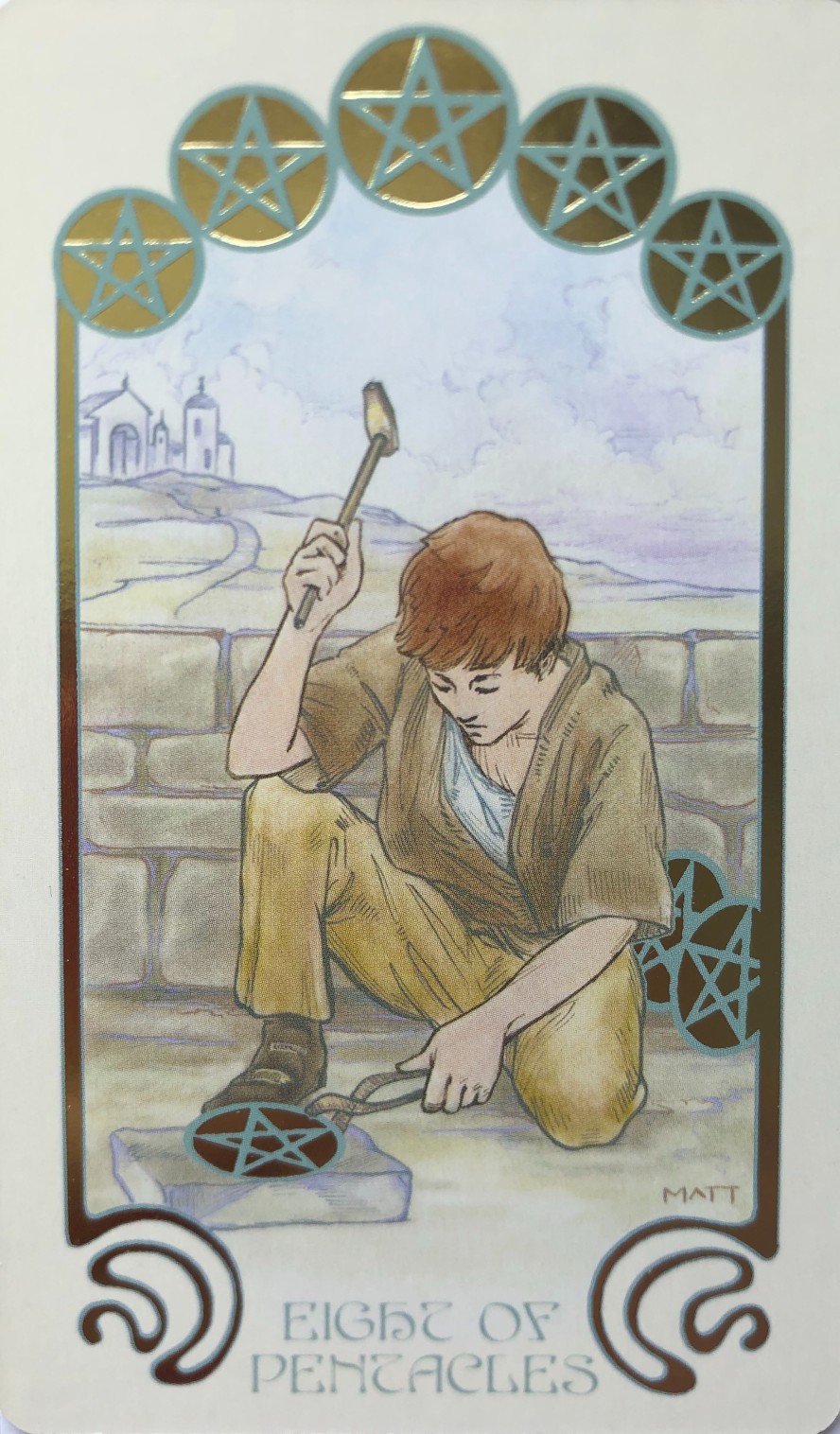
The suit of pentacles relates to the physical aspects of life: work, health, finances, creative outlets, and material possessions. It relates to the element earth and the direction east. The Eight of Pentacles card shows a craftsman hammering something. It means creativity, concentration, craftmanship, and focus.
It’s hard to say what this means. Both the US and China are obviously focused on their relationship, since it’s one of the most important relationships in the world right now. Can you really say they’re being creative in regard to each other, though? Not really, unless you take that to mean forming partnerships (in the US’ case, with the free world and countries like India and Vietnam; in China’s case, with Russia) to counter each other (which is not actually that creative). And somehow this is related to land in the east? What?
See what I mean? You kind of have to stretch the truth to make this work.
Third card: Future
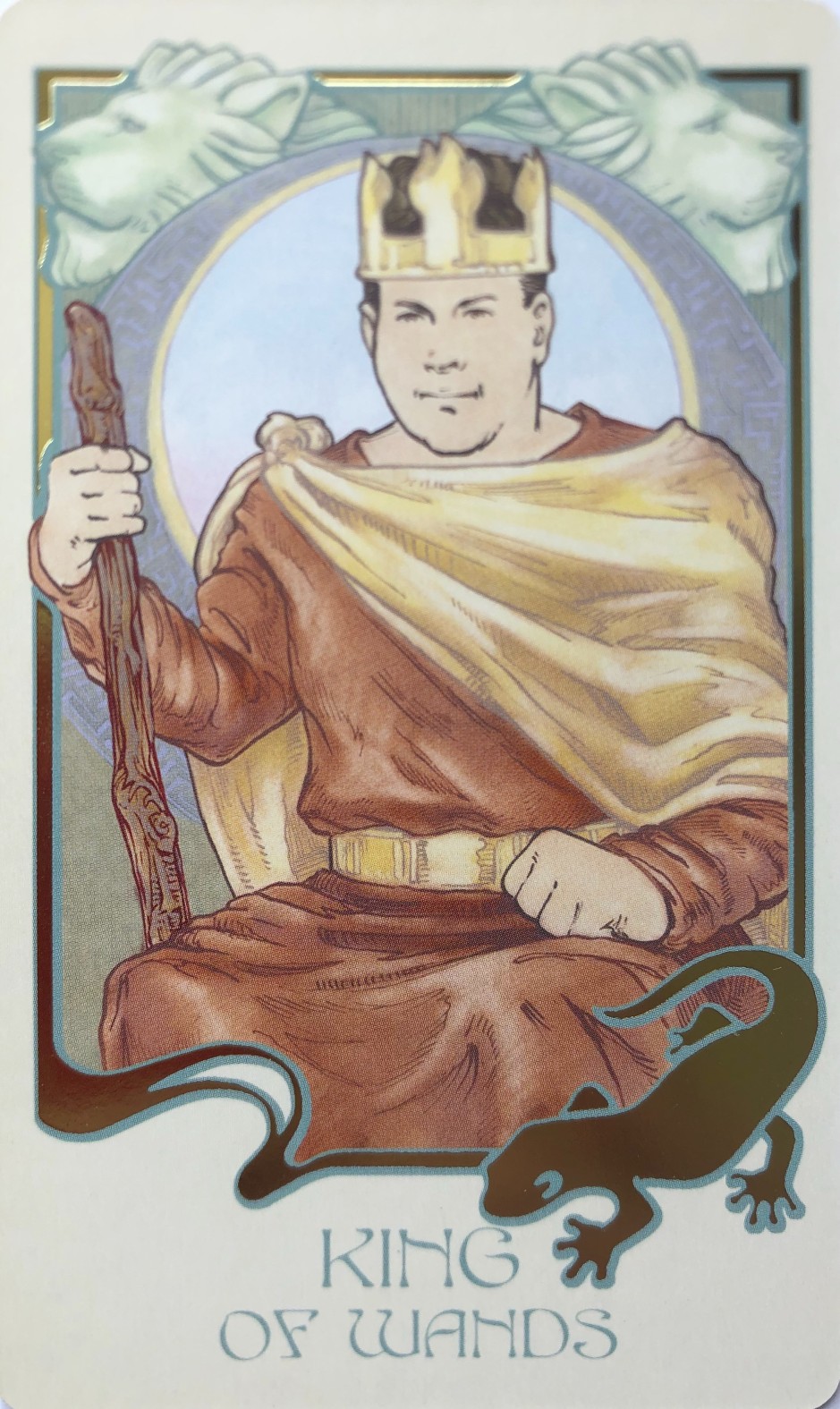
The suit of wands mirrors your consciousness and gives insight into the core of what you are – both internal and external. It urges action in situations that arise. It relates to the element fire and the direction south. The King of Wands card shows a king sitting down and looking commanding. Oh, and, for some reason, there’s a lizard in the corner. This card means influence, respect, leadership, and maturity.
Ok, I was really curious about the lizard, so I looked it up, and no one really seems to know why it’s there. The best guess is the lizard is a salamander, and salamanders were mythologically associated with fire (people thought they could live in fires and even extinguish them), and wands are also associated with fire. Anyway, I guess this means the leaders of US and China will look inside themselves and act decisively in regard to their relationship, and this will bring them influence and respect. Given the elemental and directional associations, maybe there’ll be a wildfire or a volcanic eruption in the southern hemisphere or something, and the two countries will work together to deal with it. However, since this is a minor arcana card rather than a major one, this indicates more a micro rather than a macro event, so ultimately either this won’t have that big an impact, or it’ll be short-lived, or both.
Well that was kinda lame! Would you like to ask about something else? How about the COVID pandemic – how will the rest of it play out? This time, I’ll do a reading of all three cards in conjunction with each other. Same drill: pick three cards whilst keeping the question in mind and lay them on the table one-by-one.
This is our spread.
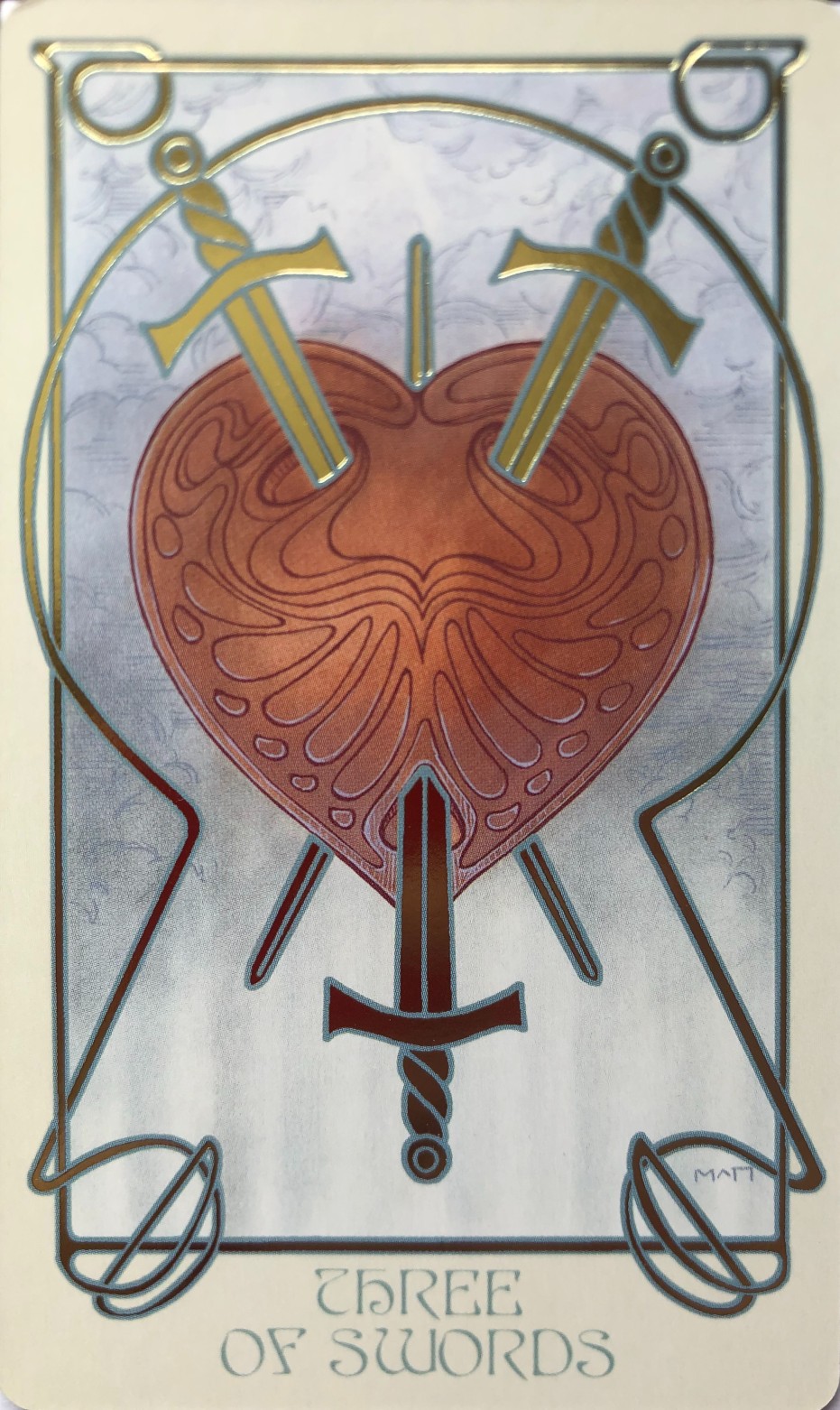
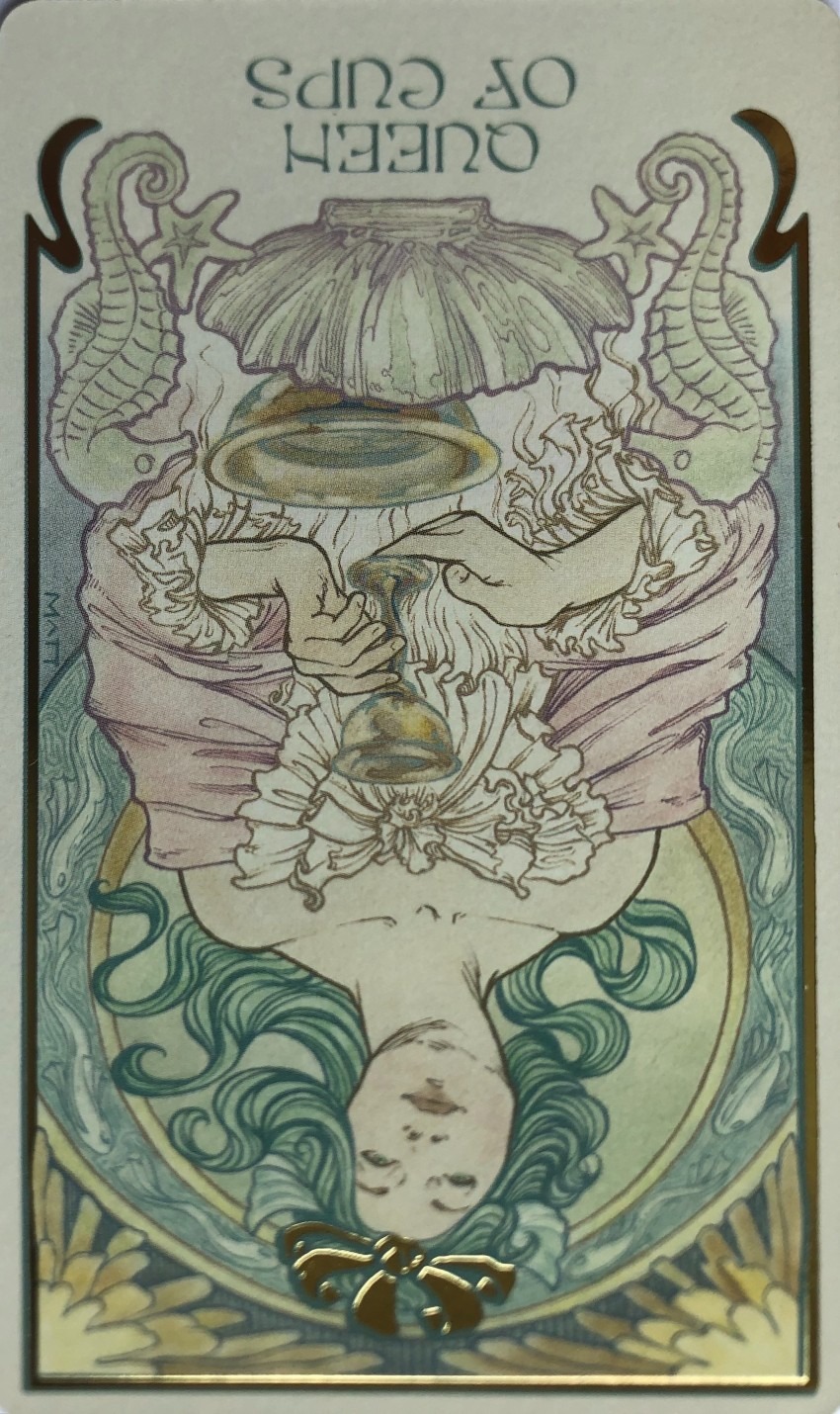
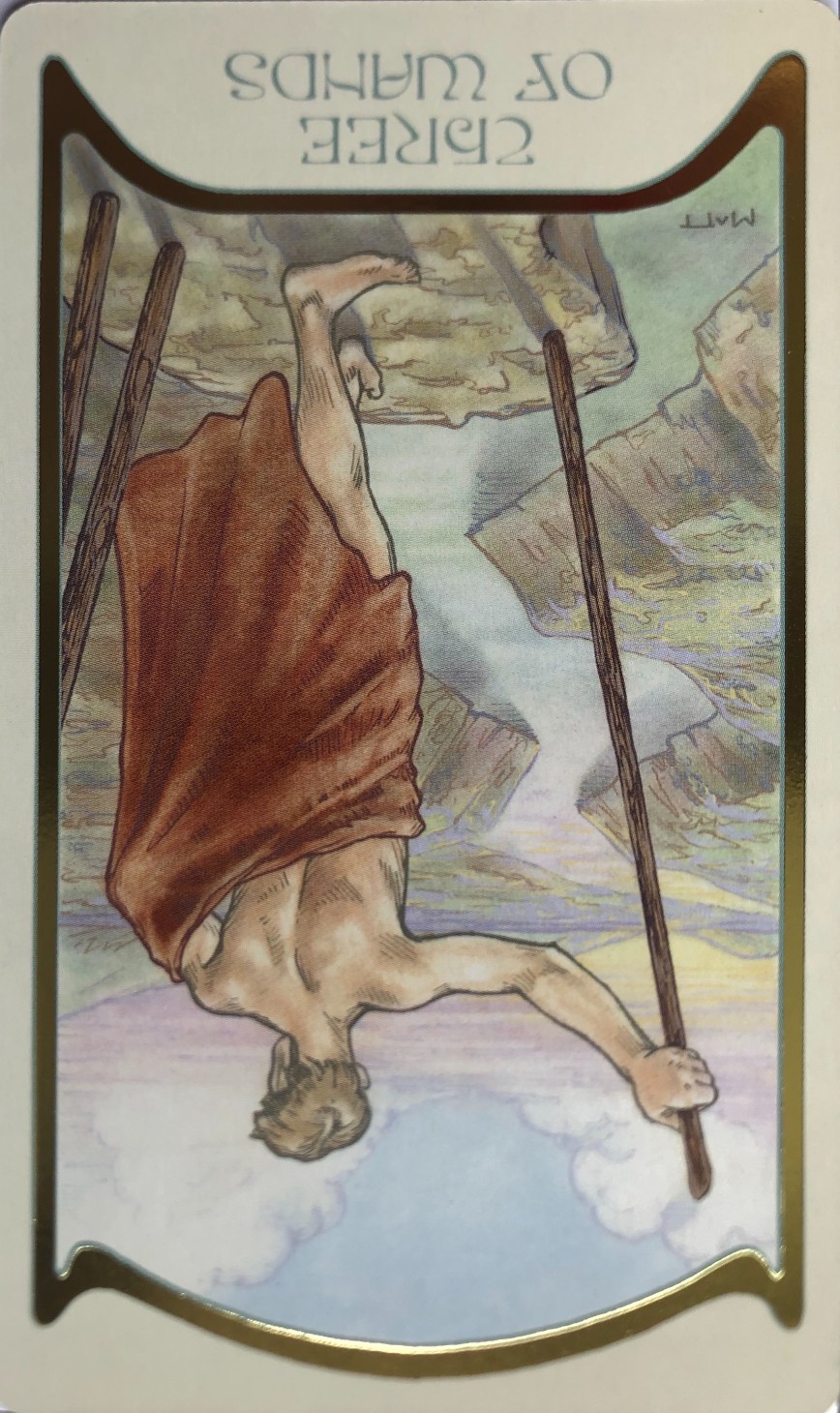
The first card is the Three of Swords. The suit of swords is associated with power and conflict, but be keen to remember that swords have a double edge. They are reminders that there is a fine line between good and evil. It’s associated with the element air and the direction north. The Three of Swords card isn’t exactly subtle – it shows a heart pierced by three swords. It means pain, grief, deception, and rejection. The second card is the Queen of Cups, inverted. The suit of cups relates to emotional states and relationships. It appears when we need to pay attention to intuition when making decisions. It’s associated with the element water and the direction west. The Queen of Cups looks regal and welcoming. Unfortunately, this card is inverted, which means kind of the opposite: insecurity, dependency, dishonesty, and dissatisfaction. The third card is the Three of Wands, inverted. As you remember, the suit of wands mirrors your consciousness and gives insight into the core of what you are – both internal and external. It urges action in situations that arise. It relates to the element fire and the direction south. The Three of Wands card shows a man standing on a cliff and confidently surveying the landscape below, just like Caspar David Friedrich’s Wanderer above the Sea of Fog. Unfortunately, again, it’s inverted, so it means delay, obstacles, risk, and disappointment.
Oh no, this doesn’t look too good. So I guess this means that, in the north, the south, and the west, the pandemic will get worse before it gets better (I’m not even gonna try to interpret the elemental significance here). There will be a resurgence in the virus, which means pain, grief, and insecurity for many people, folks facing difficulties when trying to travel, and plans being delayed and cancelled. On the bright side, though, all three cards are minor arcana, which means this will only be in the short-term.
That’s it for today. That’ll be $50.
Have I ever done an eerily-accurate reading? Yes.
Last year, I did a past, present, and future reading for my grandpa, and I got the following.
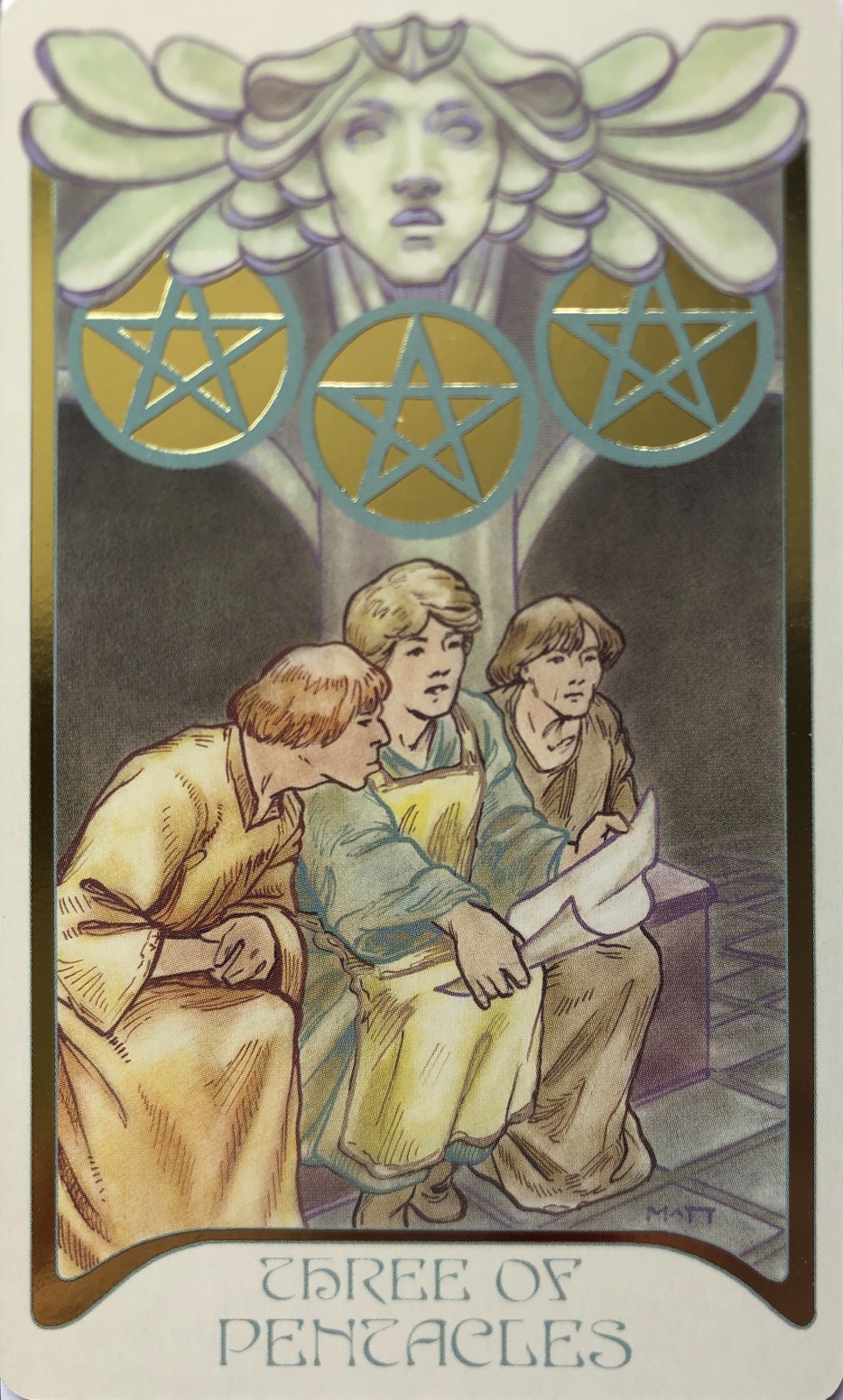
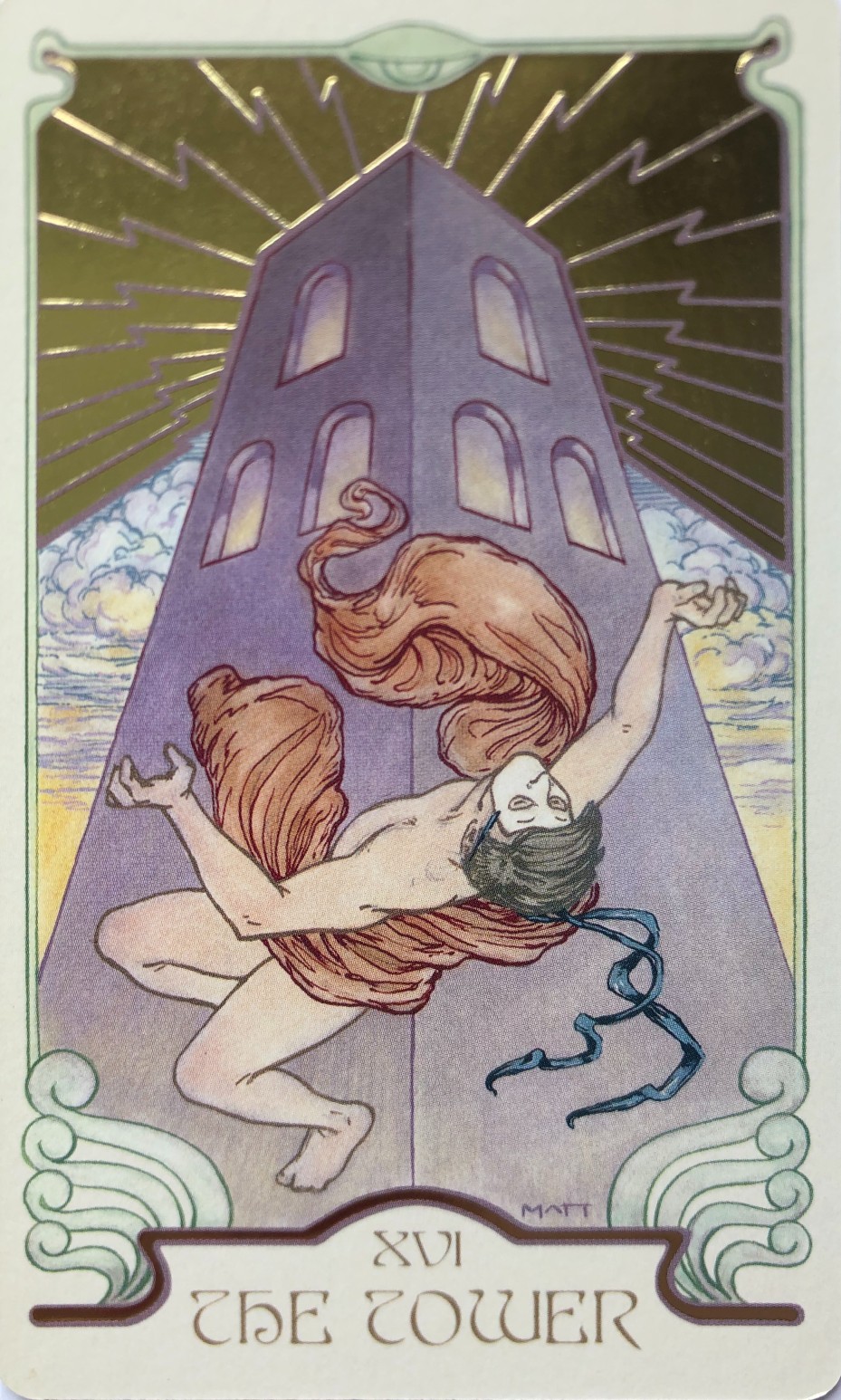
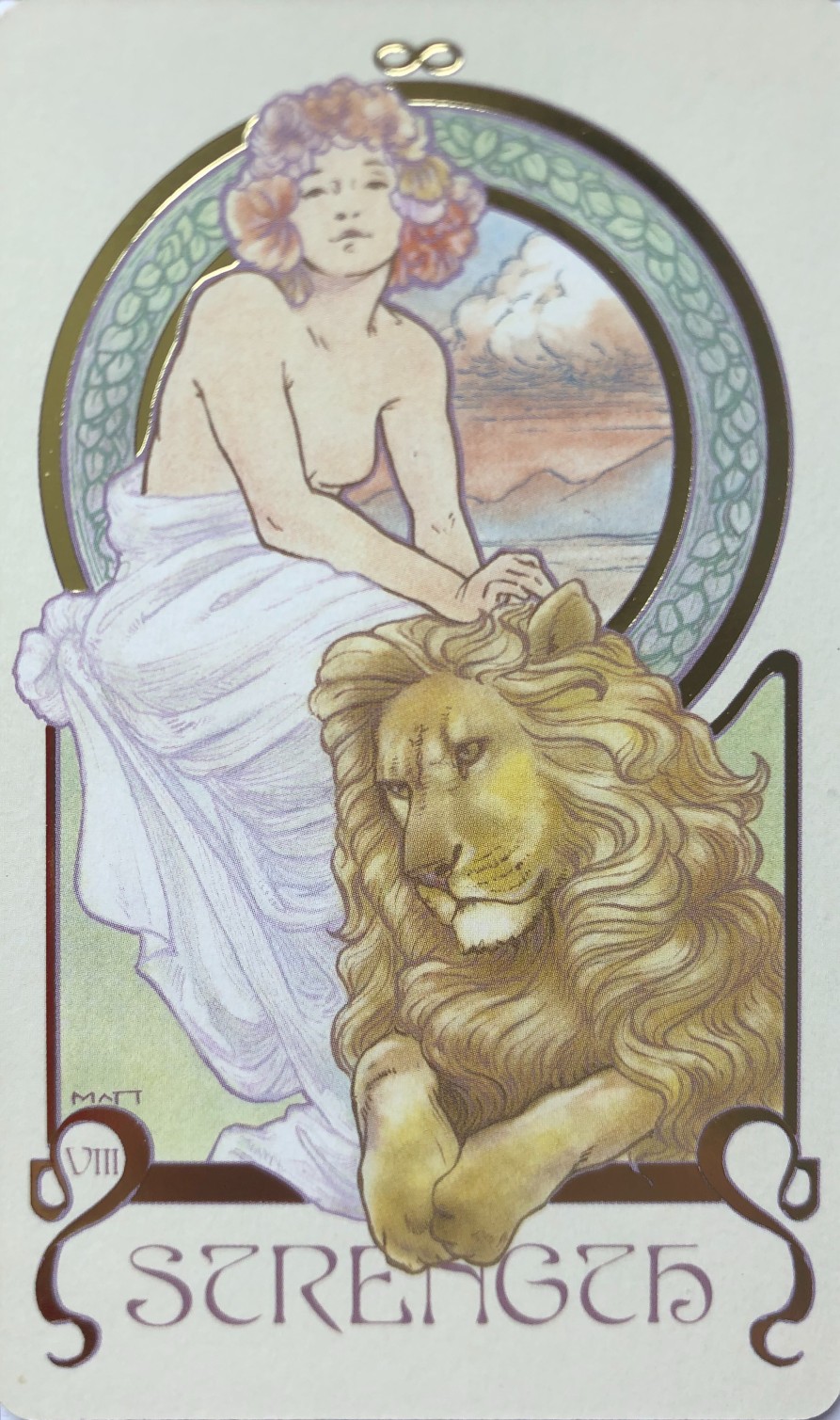
The first card, relating to his past, was the Three of Pentacles, which shows three people sitting together and discussing a plan, and means success, collaboration, solutions, and confidence, which fits with a life well-lived. The second card, relating to his present, was The Tower, which shows someone falling from a tower, and is probably the most disconcerting card in the deck. “The Tower shows up when you are living in an illusion,” says the booklet. “You must remove the mask and expose the truth of the situation in order to change it. Change is difficult; you will be shaken, the familiar will be broken down and removed from your comfort zone.” It means upheaval, change, awakening, and shock. This didn’t seem to fit at all. My grandpa lives such a slow and relaxing life – what upheaval and shock could there possibly be?
At the time, though, he’d been feeling slightly poorly, and had a fever, a sore throat, and a runny nose. However, everyone else dismissed the idea that he had COVID because: a) he hadn’t left the house in over a year, b) no one else in the household had left the house in months, except to walk around the neighborhood, and hadn’t interacted with any outsiders, c) he’d already had and recovered from COVID eight months ago, and d) he’d been double-vaxed with Pfizer three months prior.
When I forced him to get a COVID test that night, however, he tested positive, and ended up being hospitalized (taken out of his comfort zone in a most extreme way, though more because of his age, rather than because his symptoms were severe). In retrospect, everyone else was in denial about him having COVID, even though he was obviously infected with something, and COVID, being the most contagious respiratory disease, was the most likely candidate. He recovered well, though, which fits with the third card (relating to his future): Strength.
But, then again, I’ve done, like, a dozen other readings, none of which ever seemed to fit or come true.
Cards from the Visconti-Sforza tarot deck, attributed to the workshop of Milanese court painter Bonifacio Bembo (Picture Credit: The Morgan Library & Museum)
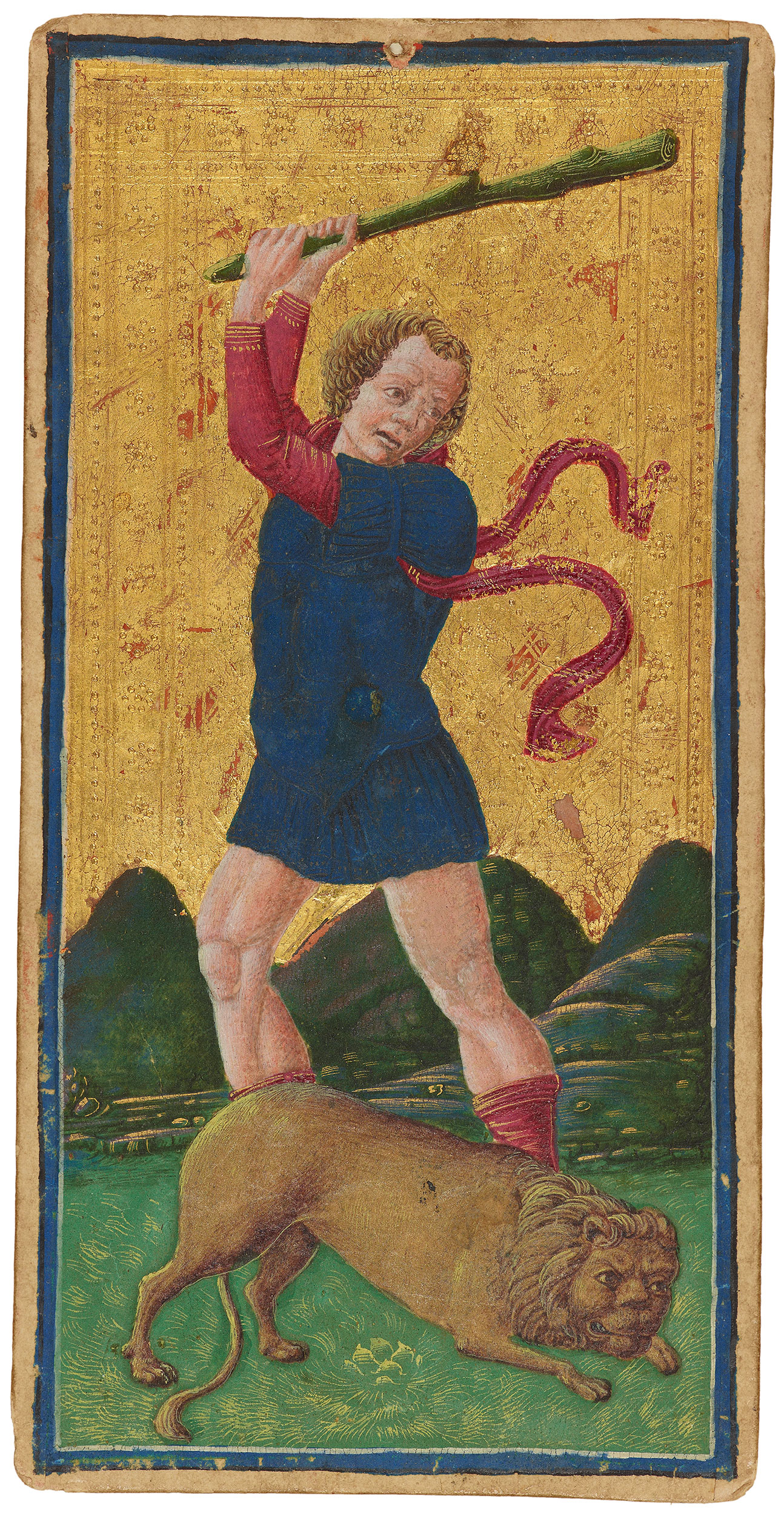
Fortitude
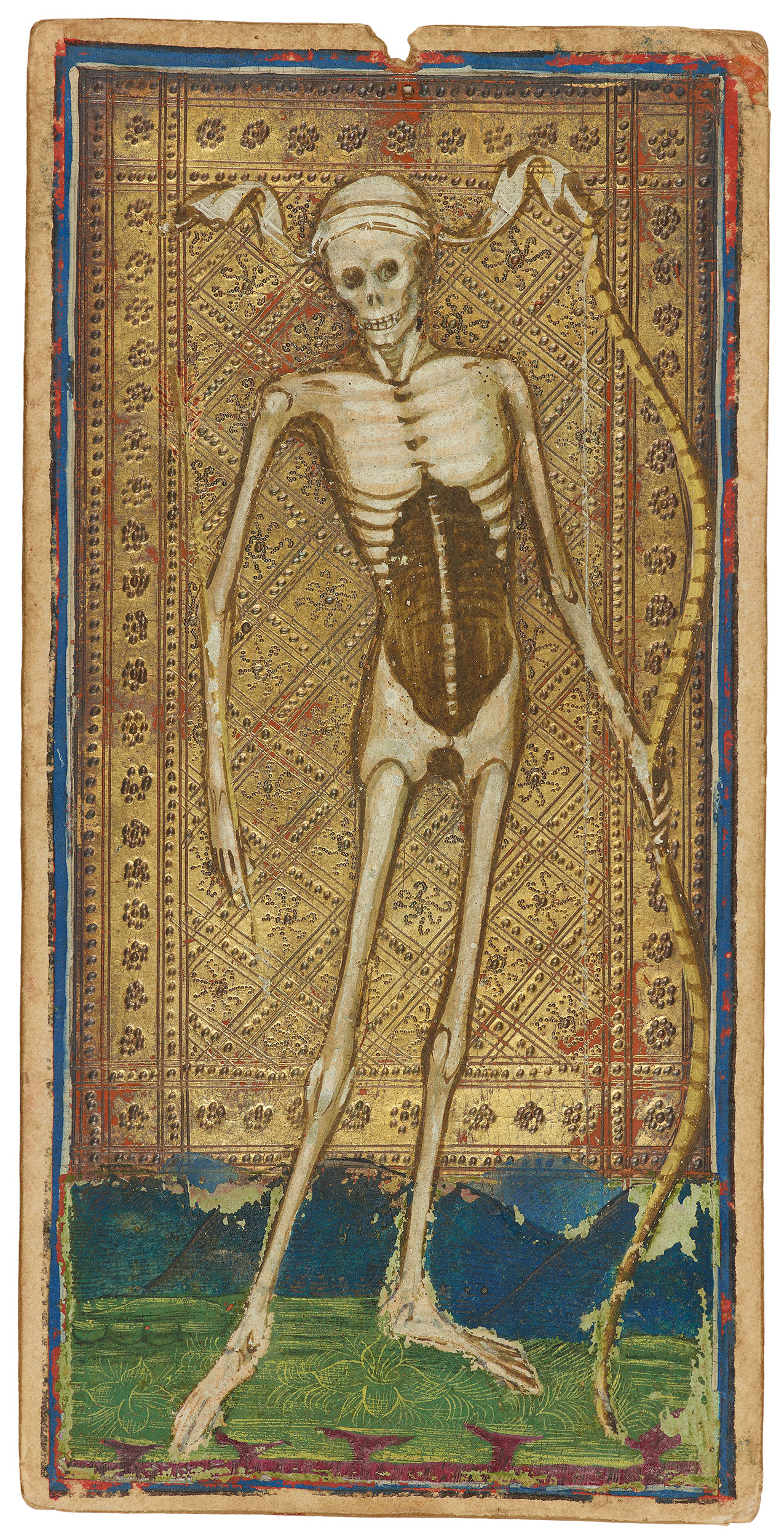
Death
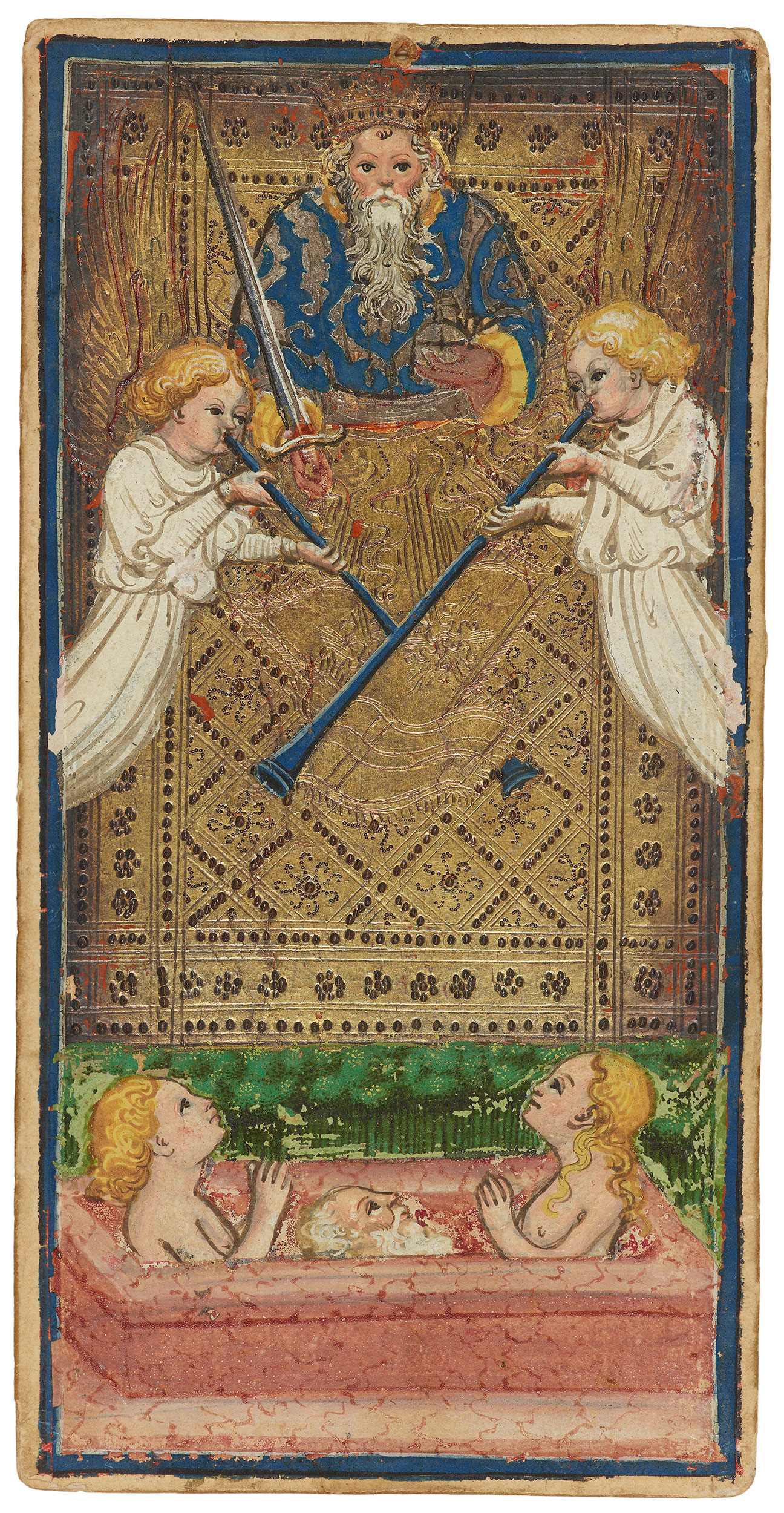
The Last Judgment
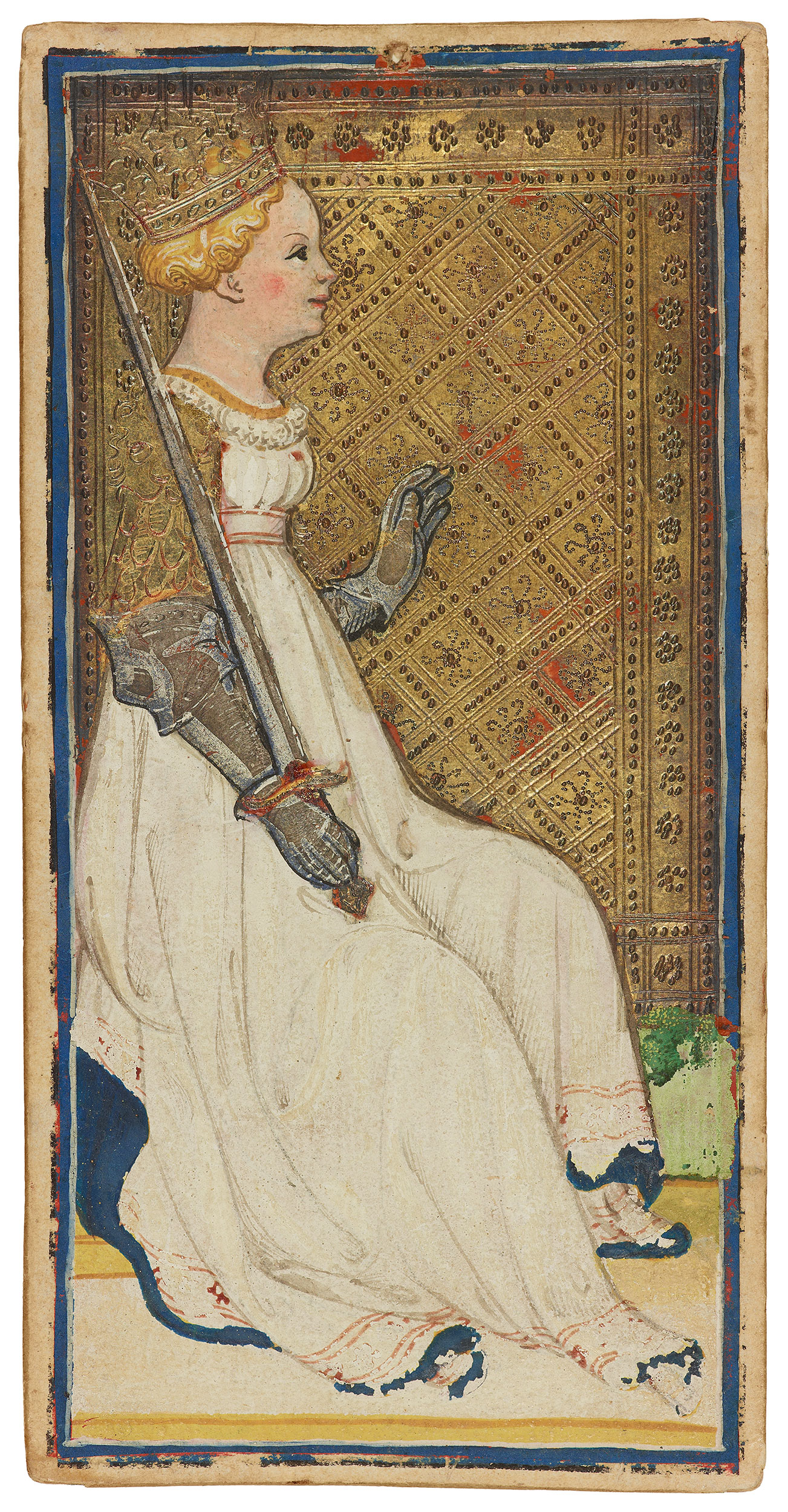
Queen of Swords
Why do people read tarot cards? In “The Lady of the House of Love,” the titular lady does so to try to escape her tragic fate. The author describes her thus:
Wearing an antique bridal gown, the beautiful queen of the vampires sits all alone in her dark, high house under the eyes of the portraits of her demented and atrocious ancestors, each one of whom, through her, projects a baleful posthumous existence; she counts out the Tarot cards, ceaselessly construing a constellation of possibilities as if the random fall of the cards on the red plush tablecloth before her could precipitate her from her chill, shuttered room into a country of perpetual summer and obliterate the perennial sadness of a girl who is both death and the maiden.
It’s quite an image. There are also some who use tarot cards in therapy. Since the meanings of the cards are often ambiguous, they allow the client to project whatever she’s preoccupied with onto the cards, kind of like a Rorschach inkblot test, which the therapist can then unpack and discuss. Sarah May Low, a prominent Malaysian tarot card reader, says it’s a way of tapping into a client’s subconscious, including suppressed memories. She said there are psychological benefits from tarot card readings, as the cards represent a “form of archetype” that can help clients think through issues. “When people have problems in life, they can see [tarot] practitioners who can help clients structure their thoughts [and] untie knots in the client’s mind,” she told me. Funnily enough, clients might be more willing to go to a tarot card reader than a therapist with their problems because of the stigma associated with the latter, at least in Asia. “Most people fear going to a psychologist or psychiatrist because then they think ‘Something is wrong with me,’” she said. “People are more comfortable going to a tarot reader or astrologer.”
Others use tarot cards as tools for mental stimulation: since the card you pull is random, it can introduce some randomness into your life, breaking you out of routine thought-patterns and prompting you to consider something new.
For most of the people who believe tarot cards have magical powers, however, the “why” of it is obvious: to predict the future, to find out what’s really going on, to gain insight.
Why do I do it? For fun. I haven’t tried seducing anyone with my tarot cards yet, but I have been able to freak someone out.
When a family friend came over this February, I read her fortune for the new year. I can’t remember what cards she got, but they were all ominous, and she, forgetting that I had picked tarot up a few months ago just to amuse myself, forgetting that I have no supernatural abilities at all, cried “I don’t want to hear anymore!” and ran away in the middle of the reading.
Mission accomplished.

